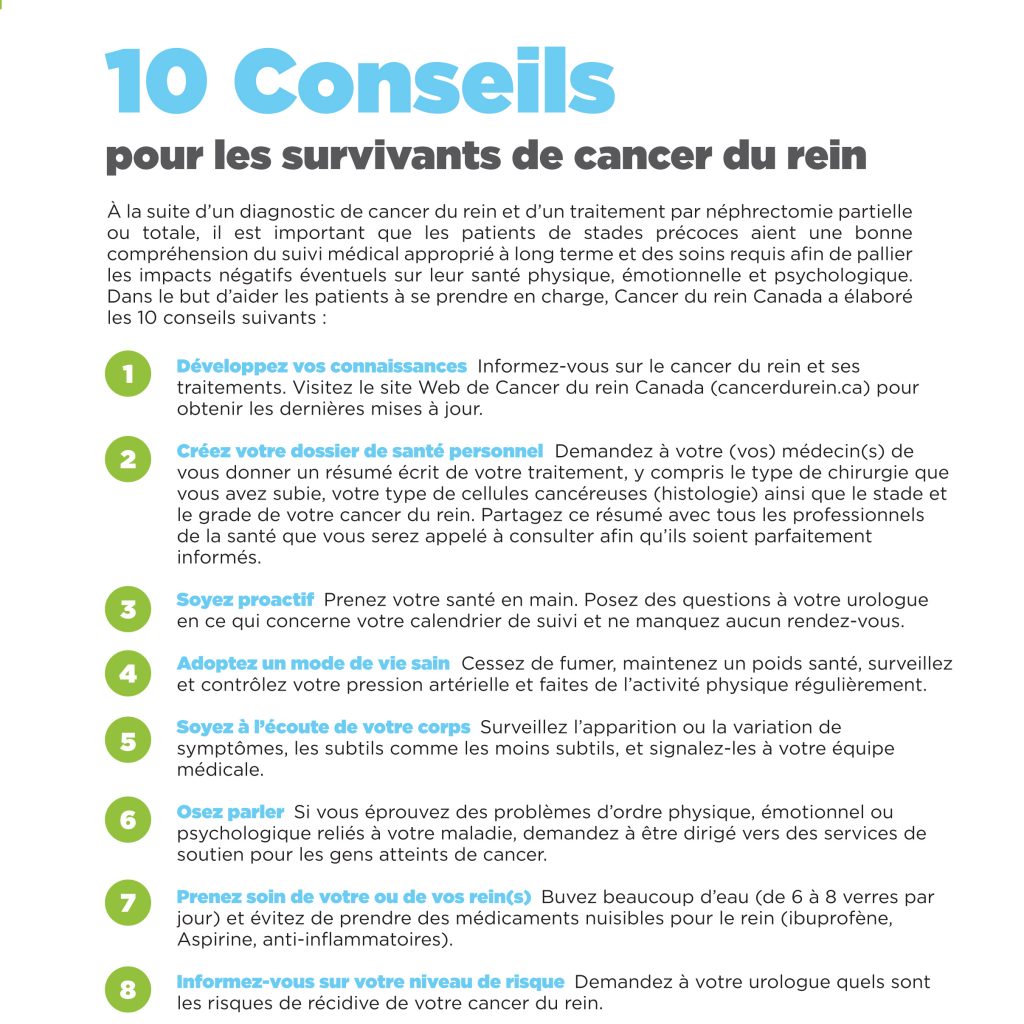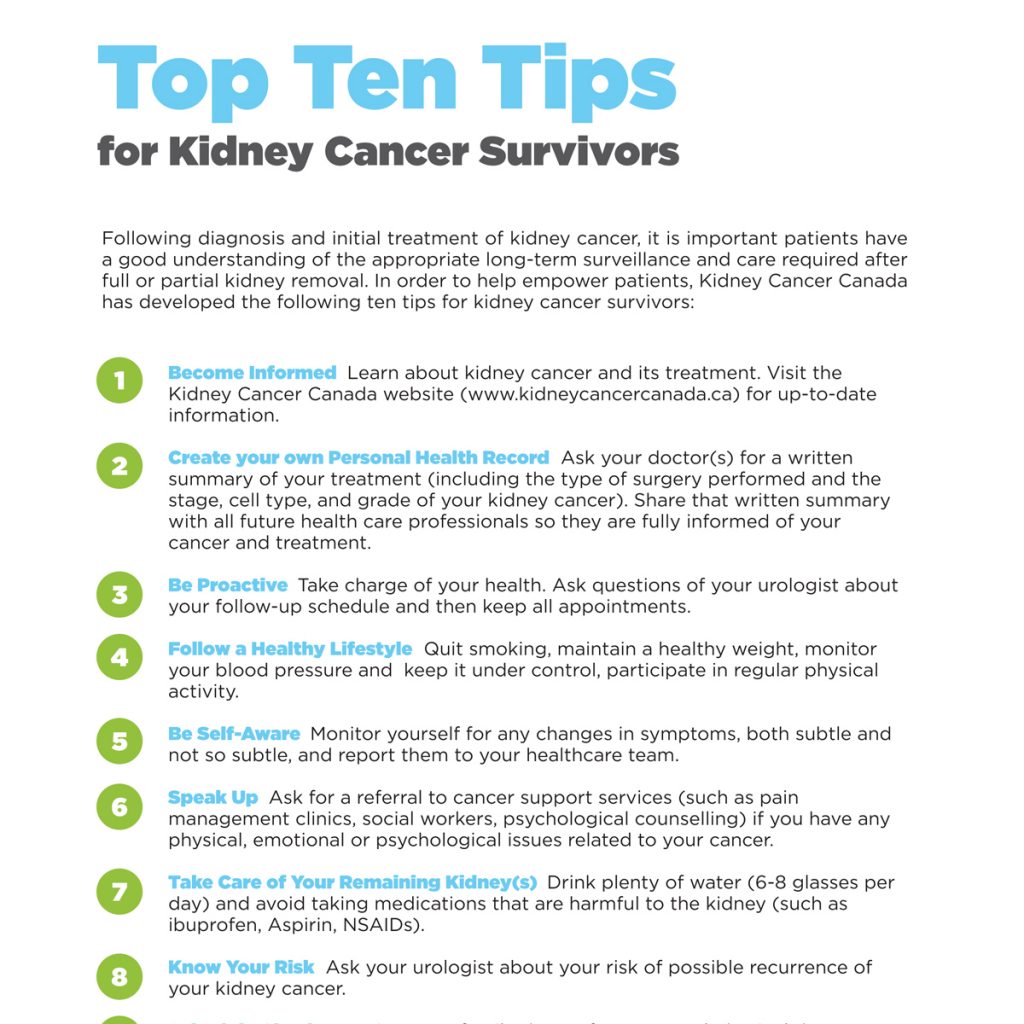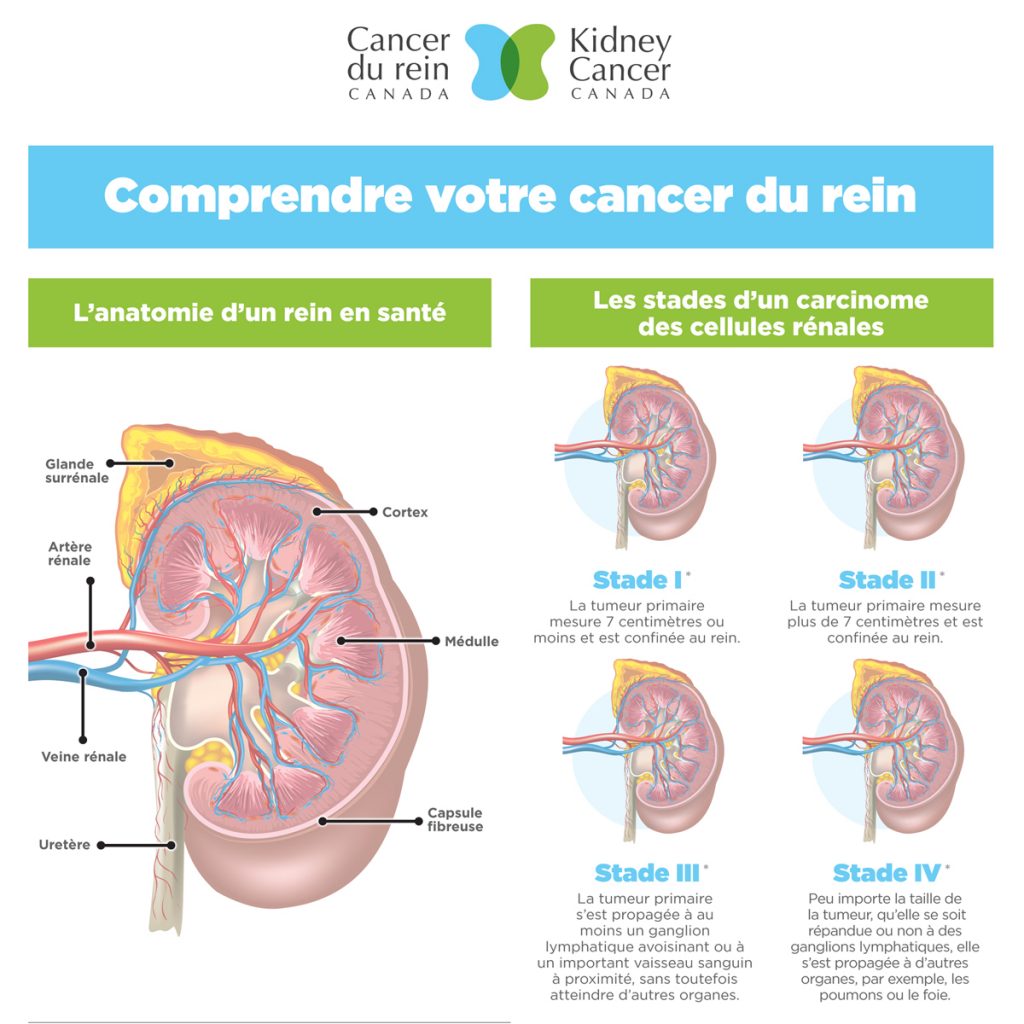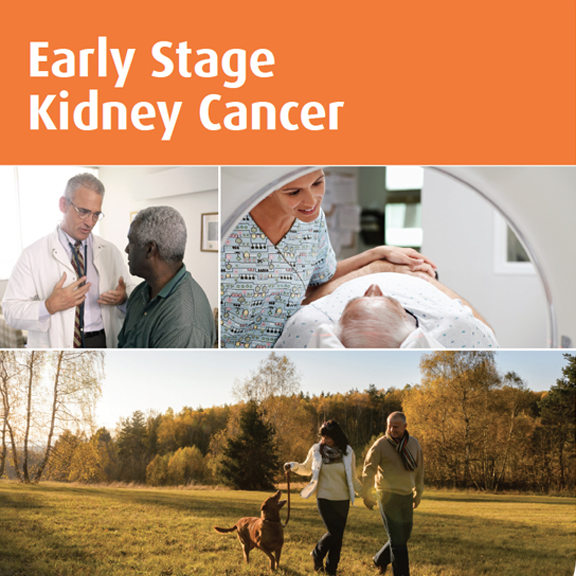
ASCO GU 2021
Webinar hosted by the Kidney Cancer Coalition: What’s New in Kidney Cancer Research?
The Kidney Cancer Coaltion held a webinar on the latest research in kidney cancer from ASCO-GU. Four leading experts shared the research in patient-friendly language and answered questions. Learn what they heard and how it might impact your treatment.
Watch webinar here
Summary of Kidney Cancer Take-Home Messages from ASCO GU 2021
Source: International Kidney Cancer Coalition (IKCC)
As a result of the COVID-19 pandemic, this year’s American Society of Clinical Oncology Genitourinary (ASCO GU) Symposium was held virtually from 11-13 February 2021. The virtual presentations are available to view on the ASCO website. The International Cancer Coalition (IKCC) attended the virtual scientific programme to keep abreast of the latest advances in the care and treatment of people with kidney cancer.
Please note: The following summary was prepared by patient advocates for the benefit of patient organisations around the world who focus on kidney cancer. While this summary has been medically reviewed, the information contained herein is based upon public data shared at this meeting and is not intended to be exhaustive or act as medical advice. Patients should speak to their doctor about their own care and treatment.
Combination therapies continue to be of interest
Advanced kidney cancer, or renal cell carcinoma (RCC), is best treated today with a combination of either two drugs that unleash the immune system (immunotherapy; nivolumab and ipilimumab) or an immunotherapy drug (pembrolizumab or avelumab) plus a tablet that blocks the blood supply to cancers (VEGF inhibitor; axitinib, lenvatinib, cabozantinib). Combination therapies continue to be of great interest at ASCO GU 2021, with the presentation of updated results from some ongoing studies and results from some new combinations.
Results from the phase 3 CLEAR study showed that lenvatinib (vascular endothelial growth factor (VEGF) inhibitor) used together with pembrolizumab (immunotherapy) resulted in better survival and cancer shrinkage compared to sunitinib when used for patients with advanced renal cell carcinoma who had not been treated before.
There were 1069 patients in this study, who were put into 3 groups: one group were treated with lenvatinib plus pembrolizumab, another group with lenvatinib plus everolimus, and the third group with sunitinib. For patients treated with lenvatinib and pembrolizumab, the time to when the drug stopped working and the cancer started growing again (progression-free survival) was nearly 2 years, compared to 9.2 months for sunitinib. The overall survival time for the patients in the study could not be calculated because the study is ongoing, but the information collected so far show overall survival time to be longer for patients treated with lenvatinib and pembrolizumab compared to those treated with sunitinib. There was more cancer shrinkage (response rate) with lenvatinib plus pembrolizumab (71%) compared to sunitinib (36.1%), with 16.1% of patients having complete shrinkage of their cancer when treated with lenvatinib plus pembrolizumab.
Nearly all patients in the study had side effects to treatment. Patients in the lenvatinib plus pembrolizumab group were more likely to have a reduction in their dose of treatment due to side effects (around two thirds of patients) than patients in the sunitinib group (around half of patients). However, the side effects for each treatment were not unexpected and were manageable.
In conclusion, “These results support lenvatinib plus pembrolizumab as a potential first-line treatment for patients with advanced renal cell carcinoma,” said Dr Motzer from Memorial Sloan Kettering Cancer in the USA. The big questions are: who should receive this combination versus all the other recently approved combinations? The data are very strong, but we do not know how well tolerated this treatment is, nor do we have a way of directly comparing these results to those obtained with the other combination treatment. It is certainly an attractive choice, but does exclude consideration of the other combinations, like pembrolizumab plus axitinib, nivolumab plus cabozantinib, or nivolumab plus ipilimumab.
Combinations of immunotherapy drugs (nivolumab plus ipilimumab) and immunotherapy plus VEGF inhibitors are widely used for the treatment of metastatic renal cell carcinoma. However, limited information is available to compare the outcomes from different immunotherapy combinations in the real world. In this study, data from the International Metastatic RCC Database Consortium (IMDC) database was used to determine outcomes from treatment with immunotherapy combinations when given to untreated patients. The outcomes from three immunotherapy combinations (pembrolizumab plus axitinib, avelumab plus axitinib, and nivolumab plus cabozantinib) were compared with nivolumab plus ipilimumab.
There were 723 patients in the study, of which 571 patients were treated with nivolumab plus ipilimumab and 152 patients were treated with immunotherapy plus VEGF inhibitor combinations. In patients with intermediate or poor risk renal cell carcinoma, there was less cancer shrinkage, and a shorter duration of treatment for patients in the nivolumab plus ipilimumab group compared to patients treated with the immunotherapy plus VEGF inhibitor combinations. However, there was no difference in the time to next treatment and overall survival time.
Serious immune-related side effects that needed treatment with steroids or caused a delay in treatment resulted in a longer overall survival time compared to patients who did not have steroids or dose delays.
In this real-world study, while duration of treatment was longer response rate higher with immunotherapy plus VEGF inhibitor combinations, there were no differences in overall survival time and time to next treatment compared to nivolumab plus ipilimumab in patients with intermediate- or poor-risk cancer. Serious immune-related adverse events resulted in longer overall survival time and time to next treatment. Both nivolumab plus ipilimumab and immunotherapy plus VEGF inhibitor combinations are good first-line treatments for metastatic renal cell carcinoma.
Cabozantinib shows promise for papillary renal cell carcinoma
A protein called MET (also called hepatocyte growth factor receptor) has been found to stimulate the growth and development of tumours, especially papillary renal cell carcinoma. In this study, MET inhibitors cabozantinib, crizotinib, and savolitinib were compared to standard care with sunitinib for the treatment of patients with papillary renal cell carcinoma.
One hundred and fifty-two (152) patients with metastatic papillary renal cell carcinoma who had received up to one previous therapy (excluding VEGF and MET inhibitors) were put into four treatment groups to be treated with either sunitinib, cabozantinib, crizotinib, or savolitinib.
Progression-free survival was longer in patients who were treated with cabozantinib (9 months) than in patients treated with sunitinib (5·6 months). Cancer shrinkage (response rate) for cabozantinib was 23% comparted to 4% for sunitinib. Savolitinib and crizotinib did not improve progression-free survival compared with sunitinib. Severe or life-threatening side effects were reported by 69% of patients on sunitinib, 74% on cabozantinib, 37% on crizotinib, and 39% on savolitinib. There was one death due to a blood clot (thromboembolism) in the cabozantinib group.
In summary, cabozantinib improved progression-free survival in patients with previously treated, metastatic papillary RCC compared to standard treatment with sunitinib.
New hypoxia inducible factor (HIF) inhibitor for pre-treated advanced renal cell carcinoma
Kidney cancers frequently have mutations in the von Hippel-Lindau (VHL) gene, resulting in high levels of a protein called hypoxia-inducible factor, or HIF-2α. This results in a number of changes in the cancer cells and their surrounding environment that favour tumour growth. The novel hypoxia-inducible factor 2α (HIF-2α) inhibitor, belzutifan (MK-6482), blocks the action of HIF-2α.
In a small phase 2 study, the safety and efficacy of belzutifan in combination with cabozantinib was assessed in patients who had received at least one dose of study treatment and had 6 or more months of follow-up. Patients had received no more than 2 previous treatments for their kidney cancer. Most patients (90.2%) had tumour shrinkage. Cancer shrinkage (response rate) was 22%, which included 9 partial responses. Progression-free survival was 16.8 months and 95% of patients survived at least 6 months. The study is still ongoing.
Nearly all patients (98.1%) had a treatment-related side effect, although most were mild or moderate needing only localised treatment or no treatment at all. The most common severe side effects needing hospital treatment were: High blood pressure (hypertension), low blood iron levels (anaemia), feeling tired (fatigue), changes to liver enzymes, and low blood oxygen levels (hypoxia). There were no life-threatening side effects.
In conclusion, belzutifan (MK-6482), showed promising anti-cancer activity when given with cabozantinib in patients with metastatic clear cell RCC that had been previously treated. There is not a lot of follow up information from the patients in this study and we will see whether these results continue to improve with time. The big question is whether this combination is a better option than the use of belzutifan alone, as described next.
Further follow-up data from an earlier phase I/II clinical trial with belzutifan given alone was also presented. In this trial, belzutifan was tested in 55 patients who had taken several previous treatments for kidney cancer. Patients were followed for around 28 months.
Just over half of the patients (55%) had stable disease and in 80% of patients their cancer was controlled. For patients with favourable risk cancer, disease control rate was 92% and 76% for patients with intermediate or poor risk cancer. Progression-free survival was 14.5 months, and more than half of the patients had progression-free survival of 12 months. Cancer shrinkage (response rate) was 25%, with 14 patients having a partial response to treatment. Sixty percent (60%) of patients stopped treatment due to progressive disease and 4% because of adverse events.
The most common side effects were anaemia (76%), fatigue (71%), shortness of breath (dyspnoea, 49%), nausea (36%), cough (31%), and low blood oxygen (hypoxia, 31%). Two patients had serious, life-threatening side effects needing hospital treatment, and 4 patients died during the study. None of these side effects were related to treatment with belzutifan.
Belzutifan (MK-6482) is well tolerated and effective in patients with metastatic clear cell renal cell carcinoma after further follow-up. A phase III trial in advanced renal cell carcinoma patients is underway, comparing belzutifan to everolimus. If that study shows an advantage to taking belzutifan over everolimus, belzutifan will likely be approved as a treatment option for patients with advanced renal cell carcinoma. We are at least a year away from seeing this drug approved in advanced renal cell carcinoma.
Complications of cytoreductive nephrectomy
Despite two recent randomised trials, the timing and role for removal of the kidney with the primary tumour from metastatic renal cell cancer (mRCC) patients (termed cytoreductive nephrectomy) remains controversial. An important consideration is the risk of medical complications, but there is little contemporary information about this. The following study looked at the medical complications due to cytoreductive nephrectomy carried out at five hospitals from 2005 to 2019.
Medical complications and outcomes 90 days after nephrectomy were assessed in 937 patients with metastatic RCC. Before their operation, nearly half of these patients (43.3%) had a blood clot (thrombus) in the large vein that carries blood to the heart from the lower body (inferior vena cava). Open surgery was used in 76.3% of patients, and laparoscopic/robotic surgery was used in 23.4% patients. Drug treatment was given to 25.9% patients before their operation. The average stay in hospital was 5 days for open surgery and 3 days for laparoscopic/robotic surgery. Patients who had a blood clot removed stayed in hospital for an average of 6 days because this had a higher risk of major complications. Nearly 10% patients had major complications within 90 days of their operation. Just over 1% of patients died within 30 days of their operation, and 6.7% died within 90 days. Importantly, drug treatment given before the operation did not increase the risk of complications or death.
In conclusion, cytoreductive nephrectomy results in major complications for 10% of patients and 1% of patients died within 30 days of their operation. Drug treatment given before nephrectomy did not increase the risk of complications or death.
Combination of SABR and immunotherapy shows promise
Pembrolizumab has been shown to be effective for the treatment of clear cell RCC, with cancer shrinkage of 34%, and progression-free survival of 7.1 months. Stereotactic ablative body radiotherapy (SABR) is a radiotherapy procedure that uses special equipment to position the patient and deliver a large dose of radiation to a tumour, avoiding surrounding healthy tissue. SABR is an option for patients with metastatic RCC with few metastases (oligometastatic RCC), but patients often develop new metastases, or their cancer comes back after SABR treatment. The RAPPORT study was a phase 1/2 study looking at the safety and efficacy of SABR and pembrolizumab.
Thirty (30) patients with metastatic clear cell RCC were looked at in this study. Patients were treated with one dose of SABR to all metastases, followed by pembrolizumab treatment. Four patients had one or more serious treatment-related side effects needing hospital treatment. There were no life-threatening side effects or deaths. For 83% of patients, their cancer was controlled. Progression-free survival was 15.6 months and overall survival at 1 and 2 years was estimated to be 90% and 74%, respectively. At 2 years, the cancer had not started growing again in 92% of patients.
In conclusion, the combination of SABR and pembrolizumab in oligometastatic RCC is well tolerated and controls the growth of the cancer well. Long-lasting responses to treatment and encouraging survival were seen, but further studies are needed.
Contrast agent use in patients with kidney disease
A contrast agent is a substance used to improve the visibility of blood vessels and tumours within the body during medical imaging (CT scan or MRI). There has been concern about the effect of contrast agents used with CT and MRI. The American College of Radiology and the National Kidney Foundation have reached agreement on the use and safety of contrast agents. When the kidneys are working normally, there is little or no risk of acute kidney injury (where the kidneys suddenly stop working properly) when a contrast agent is used for a CT scan. The risk is very low even in patients with chronic kidney disease, a long-term condition where the kidneys don’t work as well as they should. MRI contrast agents have been listed in 3 groups according to the risk of nephrogenic systemic fibrosis, a condition causing fibrosis of the skin, joints, eyes and internal organs caused by gadolinium in MRI contrast agents in patients with poor kidney function. Contrast agents that are in group 1 cause all the problems whereas contrast agents in groups II and III have little or no risk. This information is being used by radiologists to reduce the risks of imaging and the need to assess how well the kidneys are working before imaging.
Pathology of kidney cancer – a changing environment
Pathology is the study of the causes and effects of disease or injury on the body. For renal cell carcinoma, pathology defines the type of tumour, the stage and the grade. The way the pathology of renal cell carcinoma is reported is changing all the time with guidelines written by the International Society of Uropathology and the Genito Urinary Pathology Society. Recent research has identified four new types of renal cell carcinoma:
- Eosinophilic solid and cystic RCC is probably not cancerous (benign) and occurs in 0.2% of RCC cases
- ELOC mutated RCC is cancerous but with a good outlook
- ALK translocation RCC has a poor outlook and is very rare
- SMARCB1/1NI1-deficient RCC is similar to rhabdoid tumours and has a bad outcome
More studies are needed on these new types of renal cell carcinoma.
POSTERS
Poster 308: The past couple of years has seen a number of combination therapies for untreated advanced/metastatic renal cell carcinoma become available. Ongoing results from the phase 3 CheckMate-9ER clinical trial with nivolumab plus cabozantinib were presented in this poster.
The nivolumab plus cabozantinib combination doubled median progression-free survival compared to sunitinib (17 months vs. 8.3 months, respectively) and nearly twice as many patients responded to the combination (54.8% vs. 28.4%). The combination resulted in a 34% reduction in the risk of death compared to sunitinib and doubled the number of complete responses to treatment (9.3% compared to 4.3% with sunitinib). The number of patients coming off treatment due to side effects was low (6.6%).
The researchers also looked at 75 patients with sarcomatoid renal cell carcinoma, which is a rare but very aggressive form of renal cell carcinoma. The nivolumab plus cabozantinib combination was effective for sarcomatoid patients, reducing the risk of death by 64% compared to sunitinib and improving both progression-free survival (10.3 months vs. 4.2 months) and response rate (55.9% vs. 22.0%).
With a median follow-up of two years, nivolumab plus cabozantinib continues to show improved cancer shrinkage (response rate), longer progression-free survival time, and longer overall survival time compared to sunitinib.
Poster 285 looked at the quality of life of patients treated with nivolumab plus cabozantinib in the CheckMate-9ER study. Patients were followed for around 18 months and completed a health-related quality of life questionnaire. Patients treated with the nivolumab plus cabozantinib reported improved quality of life with less effect of the treatment on their wellbeing, less risk of their health getting worse, and fewer cancer symptoms compared to sunitinib.
The nivolumab plus cabozantinib combination was approved for the first-line treatment of advanced RCC in America by the Food and Drug Administration (FDA) in January 2021 and is currently being looked at by a number of health authorities globally.
Poster 309 presented data from CheckMate-920 on the safety and effectiveness of nivolumab plus ipilimumab in patients with advanced non-clear cell renal cell carcinoma, a patient population with a poor outlook and an unmet need for an effective treatment.
CheckMate-920 is a real-world, phase 3b/4 clinical trial of nivolumab plus ipilimumab in previously untreated patients with advanced non-clear cell renal cell carcinoma. Patients were treated with the combination for up to 2 years, or until their cancer started growing again, or they were not able to tolerate the treatment. Fifty-two (52) patients were treated and 28.8% had sarcomatoid kidney cancer. Cancer shrinkage (response rate) was 19.6%. Two patients had a complete response to treatment and 7 had a partial response. Seventeen (17) patients had stable disease. The treatment time until the tumours start growing again (progression-free survival) was 3.7 months and overall survival time was 21.2 months. All patients reported serious or life-threatening side effects, diarrhoea/colitis and rash being the most frequent.
Poster 313 also discussed the patterns of disease progression in patients treated with nivolumab plus ipilimumab in the Checkmate-214 study. After at least four years of follow up, the proportion of patients whose cancer started growing again was similar for patients treated with nivolumab plus ipilimumab (54.4%) or sunitinib (52.9%). With the nivolumab plus ipilimumab combination, 35.5% of cancer progression was due to the growth of new metastases, while for sunitinib only 25.5% of progression was due to new metastases. This was higher in patients whose cancer had started growing again after showing signs of it shrinking (50.7% versus 27.4%, respectively).
In summary, progression due to the growth of new lesions occurred more often with nivolumab plus ipilimumab compared to sunitinib, in particular in patients whose cancer started growing again after shrinking.
Poster 310: Brain metastases resulting from the spread of renal cell carcinoma are especially difficult to treat because drugs are stopped from getting to the brain by a membrane called the blood-brain barrier. In this study, cabozantinib was assessed for the treatment of brain metastases.
This study looked at 69 patients with brain metastases from renal cell carcinoma. For 25 of these patients, their cancer was growing at the start of the study. When treated with cabozantinib there was a shrinkage rate (response rate) of 61% for their brain metastases, including a complete response or disappearance rate of 13%. The rate of growth of the brain metastases was 16% for these patients at 6 months. Overall survival time was just over 14 months for both groups of patients.
In conclusion, cabozantinib was shown to reduce the size of brain metastases without being toxic to the brain.
Poster 311 described stereotactic ablative radiotherapy (SABR) as a promising treatment option for RCC patients with small numbers of metastases. SABR was used to treat patients with metastatic RCC and the time from the SABR treatment to the start of drug treatment was measured. At 12 months, 87% of patients had not started drug treatment and for 79% of patients their cancer had not started growing again. Quality of life did not get worse during the study. This study showed that SABR is a safe and effective treatment for metastatic RCC that can control the cancer and maintain quality of life.
Acknowledgements:
Medical Reviewers:
Dr Rachel Giles (NL)
Dr Michael Jewett (CA)
Dr Eric Jonasch (USA)
Medical Writer:
Dr Sharon Deveson Kell (UK)


























































